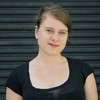In 2016, female producers and DJs are arguably more visible than ever. Just this past weekend, Seattle was home to the first edition of TUFFest, a festival devoted exclusively to female, female-identified, non-binary, and trans electronic musicians. Collectives like Brooklyn's Discwoman and Germany's Female:Pressure are making waves showcasing the work of cis women, trans women, and genderqueer DJs in clubs across the globe. And over on the fan side, initiatives like Electric Forest's HerForest and Shambhala's Women's Safe Space are working to foster a feeling of community and safety among female festival-goers.
Advertisement
Still, when it comes to gender equality, the dance world still has a long way to go. Forbes' list of top-earning DJs in 2015 was male through and through—as was Billboard's "3rd Annual Power List of DJs and Execs" in the space this year, with a few exceptions. DJ Mag's 25-year anniversary issue included not one female among the 25 dance music pioneers it set out to celebrate, even though women have been making electronic music since the dawn of the synthesizer. Boiler Room, despite frequently spotlighting female artists in their programming, announced that they'd be hiring moderators to monitor their comment sections last month, after performances by Swedish collective Staycore and Glaswegian producer Nightwave were met with a with a slew of sexist, racist, transphobic, and bullying chatter.Of course, these numbers and incidents don't exist in a vacuum—more than isolated events, they're symptoms of a system that in many ways is rigged against women and women-identifying individuals from the start. Here at THUMP, we get reminders of this structural inequality nearly every day—most frequently, in the overwhelmingly male-dominated festival line-ups that find their way into our inboxes.Because the number of female-identifying producers and DJs actually getting paid to perform is a pretty good indication of how even (or uneven) the playing field is, in 2014, we came up with the idea of tallying the gender breakdown at electronic music festivals around the world. This year, we're doing it again, with a survey of 24 festivals that took place during the first half of 2016. Some of the festivals we reached out to had this information on hand—many didn't, so we had to do the counting ourselves.
Advertisement
Below, we've illustrated these numbers for you in 24 handy infographics. Acts identifying as male are indicated with a "man" sign. Acts with one or more female-identifying members are indicated with a "woman" sign. We recognize that our counting methods aren't perfect: some of the acts we qualified as "female" actually contain more male-identifying members than female-identifying ones, and distilling the full spectrum of gender identity and expression into two categories is admittedly reductive (though we did indicate the presence of non-binary performers where applicable).Still, we hope that the results will be as eye-opening for you as they were for us. Beyond Wonderland had the lowest number of female-identified artists—at 3.2 percent, or two out of 63 artists total—while CTM had the highest, at 45 percent, or 45 out of 100 artists.Festivals with more EDM-focused programming—like Beyond Wonderland, EDC, and Ultra—and festivals specializing in big-room house and techno—like Time Warp and Movement—tended towards lower female-to-male ratios; festivals catering to a more niche, experimental-minded audience, meanwhile—like CTM, RBMA NYC, and Mutek Montreal—typically boasted a higher percentage of women. (Though any patterns that present themselves in such a necessarily limited sample should of course be taken with a grain of salt.)Of all our findings, one was the most encouraging: Mysteryland, Mutek Montreal, Movement, EDC, and Ultra—all festivals we surveyed two years ago—had a higher percentage of female-identified artists in 2016 than they did in 2014, with Mutek boasting the most impressive increase, from 9.6% to 28.9%. That said, one sad reality remained: none of the festivals we crunched the numbers for reached parity. In other words, even though things may be slowly improving, there's still more work to be done.
Advertisement
Compiled with help from Eric Linsker and THUMP Staff.
